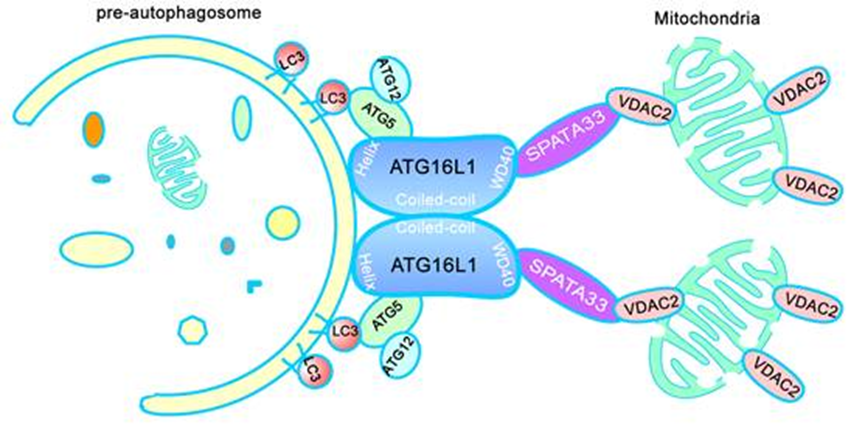Zhou Rongjia and Cheng Hanhua’ s team reveals the molecular mechanism in germline mitophagy
On October 21, the international academic journal Cell Death Differentiation published online the latest findings of Prof. Zhou Rongjia and Prof. Cheng Hanhuas’ team (College of Life Sciences, Wuhan University). Their research reveals the molecular mechanism in germline mitophagy, which is of great scientific significance for understanding autophagy’s role in the regulation and function maintenance of cellular homeostasis.
The paper is entitled SPATA33 Is An Autophagy Mediator for Cargo Selectivity in Germline Mitophagy. The co-first authors are doctoral candidates Zhang Ying and Xu Xu, and the co-corresponding authors are Prof. Zhou Rongjia and Prof. Cheng Hanhua. The research has received financial supports from the National Key R&D Program of China and the National Natural Science Foundation of China (NSFC).
The study found that autophagy gets involved in a wide range of physiological and pathological processes including development, metabolism, carcinogenesis, neurodegenerative diseases and virus clearance. In addition, damaged organelles and macromolecules can realize catabolism and recycling through autophagosome pathway, which plays a significant role in cellular structural remodeling and the maintenance of cellular homeostasis. In recent years, it has been a hot field in cell biology to explore the mechanism of selective autophagy. However, how autophagy identifies and selectively removes damaged organelles remain poorly understood.
SPATA33 is a novel gene discovered and named by the laboratory, which only exists in mammals such as humans and mouse with specific expression in germline cells. Through systematic explorations into SPATA33, the study found SPATA33 is a mediator between the mitochondria and pre-autophagosome in germline cells. Under autophagy-induced conditions, SPATA33 mediates the damaged mitochondria into pre-autophagosome to carry out catabolism and degradation through autophagy pathway. The study showed that SPATA33 binds with the outer mitochondrial membrane protein VDAC2 to recognize mitochondria, while interacting with the key autophagy protein ATG16L1 to promote mitophagy. Therefore, SPATA33 is identified as an autophagy mediator for cargo selectivity in germline mitophagy.
This finding is one of a series of achievements by Zhou and Cheng’s team in the study of molecular mechanism and functions of autophagy. The laboratory’s research progress in autophagy has been successively reported by Cell Death Differentiation, Autophagy and Molecular Biology Evolution.

The molecular mechanism of mediator SPATA33 mediating mitophagy.
Link to the paper: https://www.nature.com/articles/s41418-020-00638-2
Written by: Yang Xue
Rewritten by: Zhang Ruoxi
Edited by: Zhu Tong